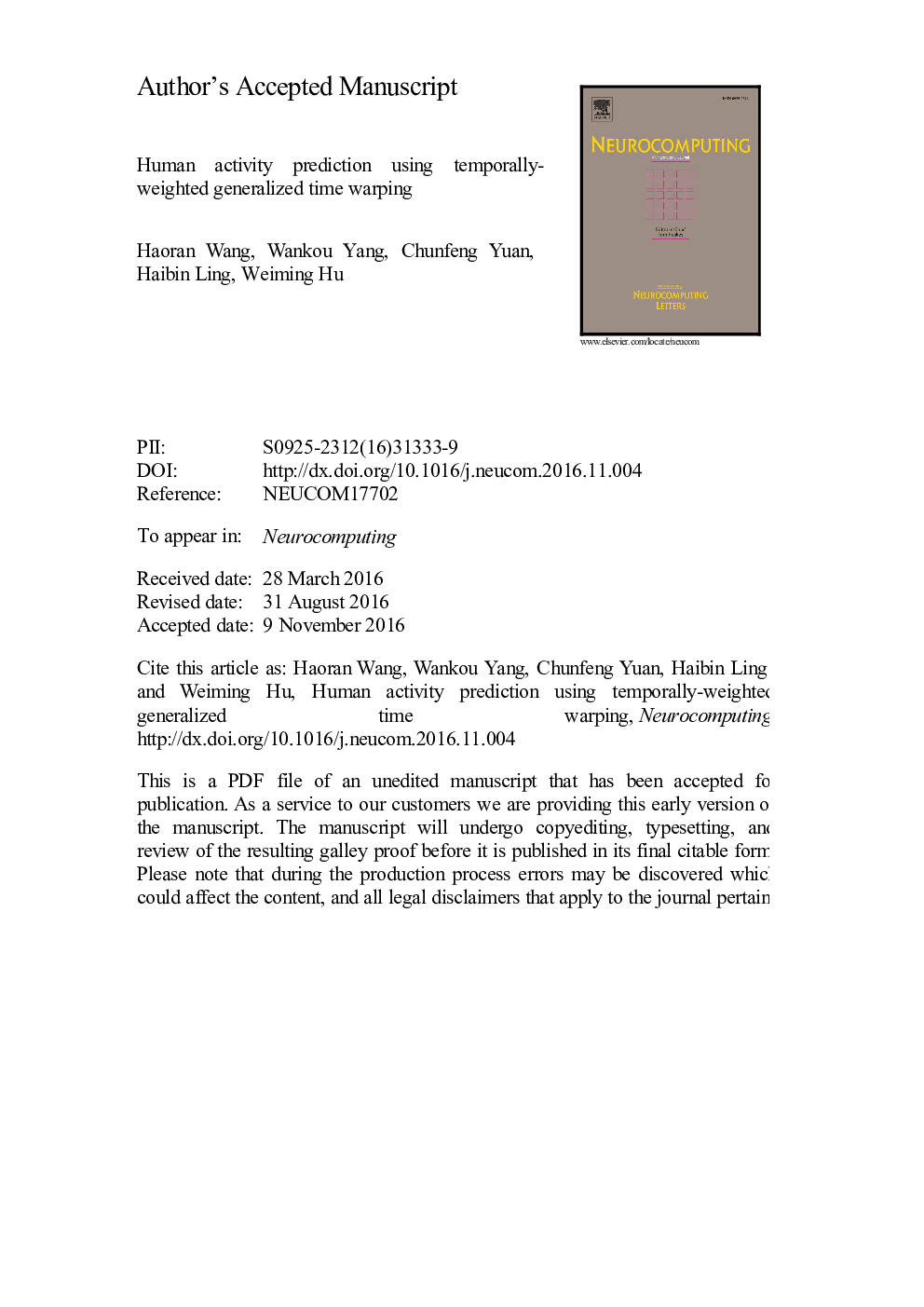| Article ID | Journal | Published Year | Pages | File Type |
|---|---|---|---|---|
| 4948071 | Neurocomputing | 2017 | 11 Pages |
Abstract
Different from traditional human activity recognition, human activity prediction aims to recognize an unfinished activity, typically in absence of explicit temporal progress status. In this paper, we propose a new human activity prediction approach by extending the recently proposed generalized time warping (GTW) [20], which allows an efficient and flexible alignment of two or more multi-dimensional time series. More specifically, for each activity video, either complete or incomplete, we first decompose it into a sequence of short video segments. Then, we represent each segment by the local spatial-temporal statistics using the classical bag-of-visual-words model. In this way, the comparison between a query sequence (i.e., containing an incomplete activity) and a reference sequence (i.e., containing a full activity) boils down to the problem of aligning their corresponding segment sequences. While GTW treats different portions of a sequence as equally important, our task is in favor of early portions since an incomplete activity video always aligns from the beginning of a complete one. Thus motivated, we develop a temporally-weighted GTW (TGTW) algorithm for the activity prediction problem by encouraging alignment in the early portion of an activity sequence. Finally, the similarity derived from TGTW is combined with the k-nearest neighbors algorithm for predicting the activity class of an input sequence. The proposed approach is evaluated on several publicly available datasets in comparison with state-of-the-art approaches. The experimental results and analysis clearly demonstrate the effectiveness of the proposed approach.
Related Topics
Physical Sciences and Engineering
Computer Science
Artificial Intelligence
Authors
Haoran Wang, Wankou Yang, Chunfeng Yuan, Haibin Ling, Weiming Hu,
